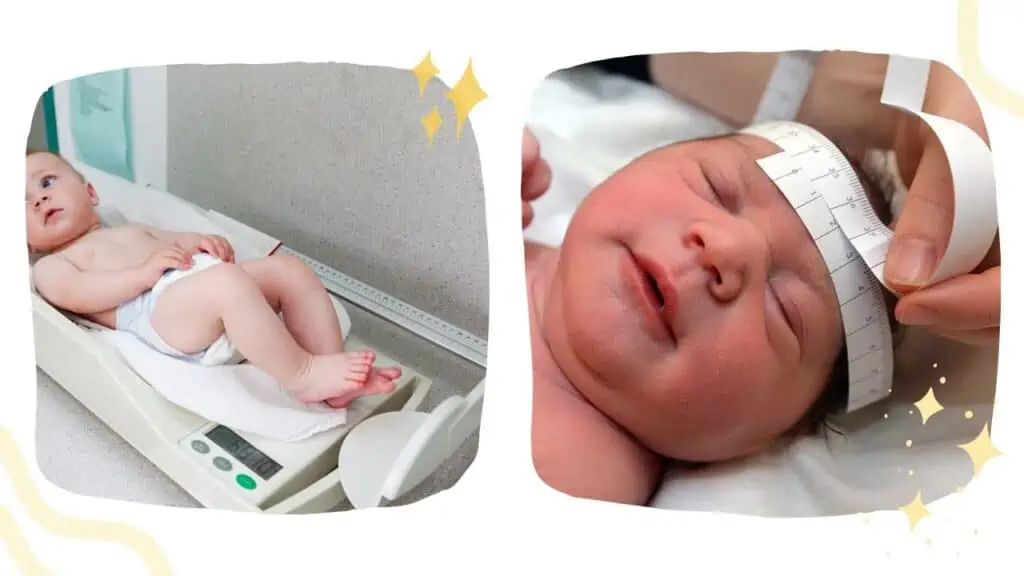
Newborn Assessments – Your Guide to A Successful First Visit
The first few days can be overwhelming for parents, but a newborn assessment at a child specialist clinic can help to alleviate some of the stress. During a newborn assessment, the child specialist is prepared to guide you and answer any of your pressing concerns as you dive into the process of caring for the new, precious little addition in your life.
If you are curious to find out what exactly happens at a newborn assessment, read on further to find out!
Contents:

When Should I Bring My Baby for A Newborn Assessment?
It is usually recommended for parents to bring their newborn to a paediatric clinic for a newborn assessment within three to five days after birth. From there on, parents would usually have additional check-ups every few weeks, especially for the first year of the baby’s life. Sometimes, your paediatrician may ask for you to come in for more frequent check-ups, depending on the baby’s health.
What Happens At A Newborn Assessment?
1. Taking the baby’s measurements
Normally, the baby’s weight, length and head circumference will be measured first. Any head coverings on the baby, as well as extra layers of clothing should be removed, before laying your baby down on an infant scale to get their weight. The baby’s length can also be measured on the scale, as the baby is laying on a flat surface with their legs stretched out. Their head circumference will usually be measured with a measuring tape.

The measurements will be recorded and plotted on a growth chart. Consequently, this growth chart can help to determine whether the baby is growing normally, and it can illustrate how the baby’s growth compares to other children of the same age.
2. Head-to-toe Physical Exam
The paediatrician will conduct a thorough physical examination of the baby. As a parent, you may bring up any concerns you have about the baby or if there are any particular areas of the baby’s body that you would like the doctor to look at.
Usually, the doctor will examine the baby’s:
- Head 👶 – the doctor will check on the soft areas, referred to as the fontanelles, on an infant’s head. This can be seen and felt at the top, as well as the back of the head. These soft spots mark the area of the head where the bones of the skull hasn’t fully formed. The spot at the back of the head will usually close around the time the child turns 2-3 months old. By 18 months, the larger spot at the front will close. Fontanelles that are abnormally large in size may be an indication of a medical condition.
- Ears 👂🏽- using an instrument called an otoscope, the doctor can check the baby’s ears for any sign of infection or fluid build-up. The doctor may also observe how the baby responds to various sounds.

- Eyes 👀 – The doctor may assess and track the baby’s eye movements when they are a few weeks older to check for any vision problems.
- Mouth 👄 – The baby’s mouth can be checked for signs of oral thrush (a common infection) or other issues. When the baby is a bit older, the doctor may also address concerns regarding teething, drooling or chewing.
- Heart and lungs 🫀🫁- Any abnormalities regarding the heart or breathing can be detected with the doctor’s stethoscope.
- Abdomen 🚼 – By pressing gently on the infant’s abdomen, the doctor can detect any enlarged organs or check for the presence of unusual lumps.
- Skin ✋🏽 – The doctor can check for any signs of rash, dry or irritated skin and advise parents accordingly.
- Genitalia – An inspection of the genitalia may be conducted, to check for tenderness, lumps or any signs of infection.
3. Checking for Jaundice

Jaundice, which can occur to due to an excess of bilirubin (a yellow pigment of the red blood cells) in the baby’s blood, causes a yellow discoloration of the baby’s skin and eyes.
It is a common condition in infants, as their liver has not developed fully enough to get rid of the bilirubin in the bloodstream. Most of the time, it is harmless for the baby and they will get better without treatment. In rare cases, treatment is needed when the levels of bilirubin in the bloodstream are very high, as there is a risk of the bilirubin passing into the brain and causing brain damage.
Treatment options include phototherapy (shining a special type of light on the skin) or an exchange transfusion (removing the baby’s blood and replacing it with blood from a matching donor).
At a newborn assessment, the paediatrician can usually check for jaundice with either a skin test (using a transcutaneous bilirubinometer to measure the level of bilirubin in the skin), or a blood test (measuring the level of bilirubin in the blood stream). In a blood test, usually, a sample of blood is obtained by pricking the baby’s heel with a needle.
4. Updating the baby’s immunization record
To keep the child safe from infectious diseases such as measles and whooping cough, it is important to ensure that they receive the vaccinations at the appropriate time, according to the national immunization schedule. Vaccines given at a newborn assessment can help to protect against illnesses such as hepatitis A & B, rubella, mumps, diptheria, tetanus, HPV, rotavirus and chickenpox.

Bring along your child’s vaccination record to each visit so that the paediatrician can check and ensure that your child’s immunizations are up to date.
During an injection, you will be guided on how to hold your baby. There will usually be clinic assistants to help keep your baby still or distract them with toys or videos/music.
5. Examining the baby’s development
Newborns may have a more limited range of gross and fine motor skills, but the paediatrician may still check that the baby is meeting certain milestones at a newborn assessment. This can include:
- Whether the baby turns towards sights or sounds
- If the baby jumps or if they are startled at loud noises
- Whether the baby reaches out for objects
- Whether the baby is able to support their head well
- If the baby responds to the parents’ facial expressions
Take a look the video below to see an example of how a baby’s reflexes are examined at a newborn assessment
The paediatrician can also help to answer any of the parents’ concerns about particular behaviours, such as sleep or stool frequency.
6. Discuss any concerns regarding feeding
Whether parents are nursing their baby, feeding them formula or a combination of the two, it is important that the baby gets enough to eat, so talk to the paediatrician if you have any concerns or issues regarding the baby’s feeding. At a newborn assessment, the doctor can evaluate whether the baby is getting too much or too little to eat, and may advise the parent to follow a certain feeding schedule.

Furthermore, some first-time parents may be unsure how to recognize cues that the baby is hungry, or, some parents may even be thinking about switching the type of formula to give to the baby. The paediatrician is prepared to answer most of these questions, so don’t hesitate to ask!
Most importantly, there are no foolish questions when it comes to caring for your newborn, so if there is anything you are unsure of, don’t hesitate to ask! Our child specialist is happy to help and ensure that your baby is receiving the best care.
References
Mayo Clinic. (2022). What to expect at your next well-baby exam. https://www.mayoclinic.org/healthy-lifestyle/infant-and-toddler-health/in-depth/healthy-baby/art-20044767
NationWide Children’s. (2022). Jaundice in Children. https://www.nationwidechildrens.org/conditions/jaundice-in-children
NHS.UK. (2022). Newborn jaundice. https://www.nhs.uk/conditions/jaundice-newborn/

Pingback: 5 Types of Diagnostic Tests Provided at the Clinic - FirstStep Child Specialist Clinic